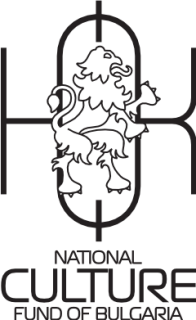What is the message of the exhibition in a nutshell?
The main aim of the exhibition is to show how modernist way of thinking where industrial design meets crafted detail in works contemporary world, and how it effects the project. We present modernism as a way of thinking not styling.
What prompted you to tackle the question of Modernism?
What is its contemporary interpretation through the selected designs in your exhibition?
What does Modernism mean to you?
Exhibition partner and producer is Regional Museum in Stalowa Wola. And Stalowa Wola is a town in south east Poland which has been built from scratch in 1930ties. In the middle of forest, visionaries of development of industrial Poland, between first and second World War decided to place there still industry and a modernist town around. Not because they like modernism, but because it was a time when modernism has been a style to built. And this town very well preserved is a pure example of modernism, in its best version. Perfect proportions, human scale, balanced combination between mass / industrial and individual detail. The Museum deals with a history of that place, want to restore value and pride of this design tradition.
So for working with the Museum for years it was a natural continuity of former projects: Unpolished, which was about new polish design after transformation and Polished Up, illustrating first successful cooperations between designers and industry. In terms of that modernism means kind of maturity. Yes, Polish design matures.
How did the selection process develop?
What things do you look for when considering a project to represent?
What is the projects’ concept role in conveying the message of the exhibition?
Both of us, Pawel Grobelny and are active on design scene of year, so our knowledge of designers / designs / products / market is up to date. So when we define the criteria (in this case it was: craft meeting industry meeting designer meeting craft all three had to be present), and we do a list of objects / designers / products. Than we look at them together. Both are very important for good exhibition: internal and external cohesion. If the exhibition is cohesive on the very basic visual level you just want to know more, to understand the the essence.
To what do you attribute the positive developments in the Polish design sector?
Time? Maturing? Industry understands better and better that original, unique design can be an added value. And that properly conducted design processes help to avoid mistakes, loose of money, failure. And designers are better prepared to do it. They understand better that the role of designer is to became business partner for investor. to share responsibility. But there is still long way to go.
You are very much connected to the development of a new form of design education in Poland – can you already see the impact of its implementation?
What are your short term ambitions in relations to design education in Poland?
Yes, I am the artistic director of School of Form, in Poznań (Design Faculty at University SWPS). It is a very new school, started in 2011. In the shortest words it is design and humanities educational concept. We teach students to ask the right questions, to be human centred, to research. We connect new technologies like robots, parametric, arduino with hand craft: wood textile ceramics. And it works: we had so far two graduations, and the third one is just starting in few weeks and our firs alumni are doing very well. Winning competitions, being invited to international conferences and getting jobs or approved for MA at really good schools like DAE, RCA etc
We just got an accreditation to start with our own MA, so we do in 2017. Last year we opened part time studies and English path where we have amazing very international group. But for me the most significant part is that our activity and presence is influencing state schools, and whole scene is changing.
Do you think it’s easier for Polish creatives to get work these days?
What challenges do they face, if any?
I think it is. Slowly. The awareness is better. Design becomes a job, not a hobby.
Do you have a favourite object in the exhibition – why?
Hard to say. When I do exhibitions I keep my likes and dislikes away.
Has the industry changed for better or worse?
Industry has changed and is changing constantly because the world is changing. Industry has to make sense. Otherwise it will collapse. So we cannot avoid the changes, even if we think they are for worse. He have to accommodate them. And we have a choice who we are cooperating with: is it fair trade? Is it ethical, responsible, sustainable.
What’s currently on your professional reading list?
Juhani Pallasmaa, The Thinking Hand. Amazing book.
What design events would you be recommending to visit during 2017?
I believe in smaller and more focused events. I would love to have a time rather to go to St Etienne Biennale or Kortrijk than Milan. And welcome to Poland, for Gdynia Design Days this summer (30.06- 09.07) and Łodz Design Festival this autumn (03-08.10).
